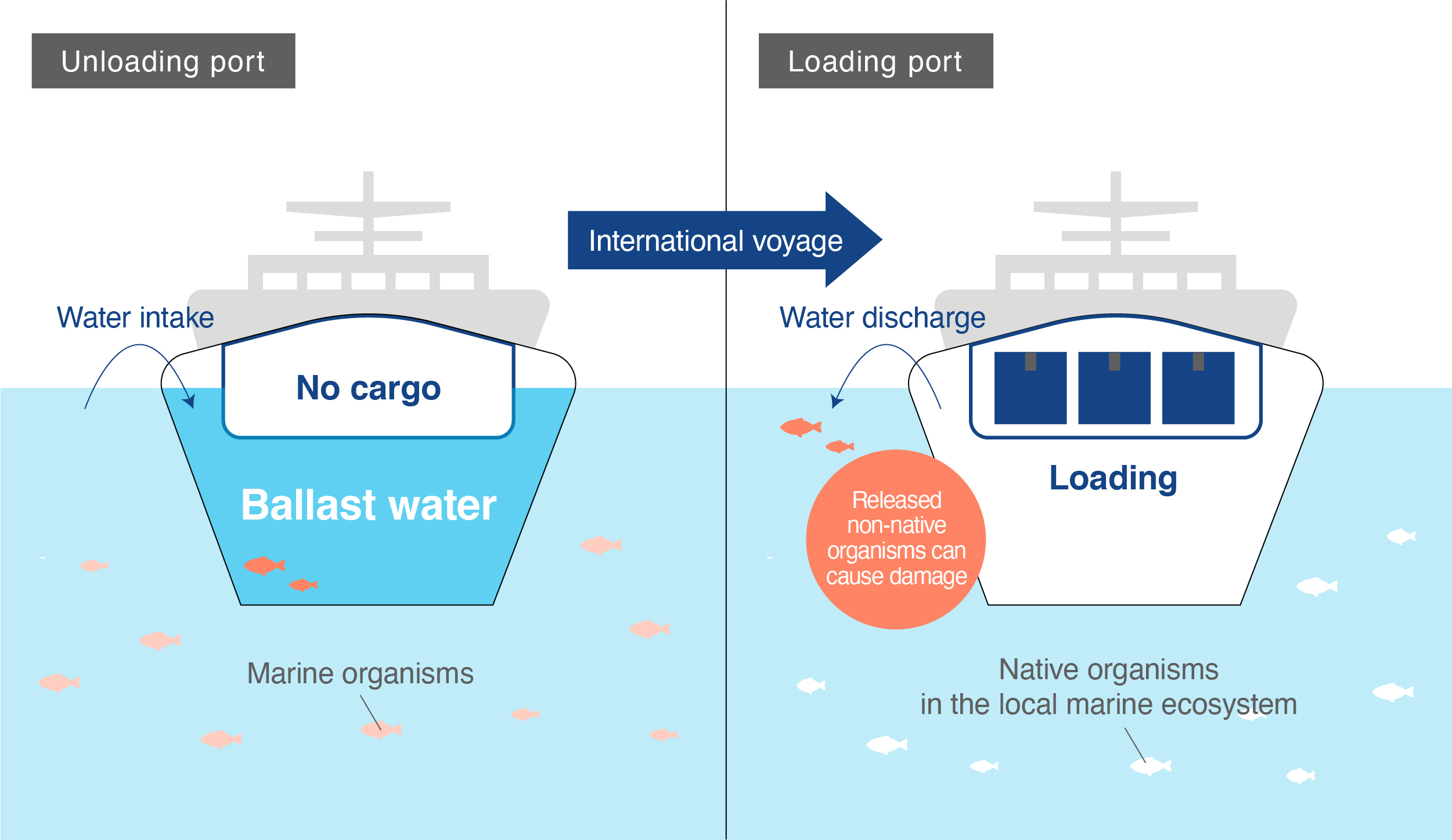Protecting Diverse Ocean Ecosystems Addressing the Problem of Ballast Water Discharge
Ballast water is taken into the hull of a ship for added weight to keep it level and stable, especially when cargo is being unloaded. Since ballast water comes from the marine environment wherever the ship happens to be, it is usually seawater containing a variety of marine organisms. Due to the distances many ships travel, the place where they discharge ballast water is often far from where the water was taken in. This means any marine organism contained in the ballast water can become invasive species in the distant places where they end up. The rapid spread of a non-native organism in any marine ecosystem can become a huge problem.
In 2004, the International Maritime Organization enacted the Ballast Water Management Convention for the management and control of ships’ ballast water. It did not enter into force, however, until 2017, which was 13 years later. The reason the treaty took so long to take effect was that many countries were slow to ratify it. This was due to issues such as the cost of installing ballast water treatment systems that would be needed to meet the new standards.
As an enterprise responsible for shipping and shipbuilding, the TSUNEISHI Group is committed to protecting marine ecosystems. Accordingly, immediately after the treaty was adopted, the Group started installing ballast water treatment systems in all ships that it built. Since 2014, before the treaty actually came into effect, they have been installed as standard equipment on all vessels delivered by the Group. In addition, TSUNEISHI SHIPBUILDING repair yards have actively carried out work to install and modify ballast water treatment systems on ships that are already in service. As of the end of 2022, a total of 71 ships have been retrofitted with this system, thanks to the company’s efforts such as making arrangements for vessel retrofit design, installation, and sales.
Addressing the ballast water problem will help protect biodiversity worldwide. By building ships with lower environmental impact, the Group will continue to help protect the planet’s abundant ocean ecosystems and ensure they will stay healthy for future generations.





